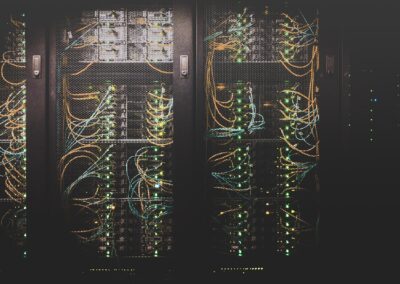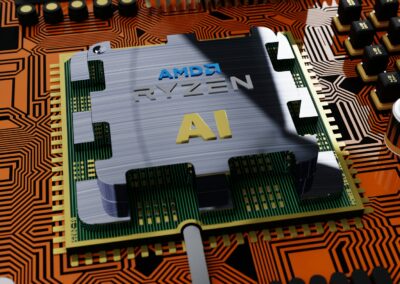Unlocking the Power of Federated Learning in IoT Networks
The Role of Federated Learning in Enhancing IoT Data Analysis
Federated learning in IoT networks represents a significant advancement in how data analysis is conducted across distributed devices while maintaining privacy. As the Internet of Things (IoT) continues to expand rapidly in regions like Saudi Arabia and the UAE, businesses and smart cities like Riyadh and Dubai are generating vast amounts of data. However, the challenge lies in analyzing this data collaboratively without compromising user privacy. Federated learning offers a solution by enabling data scientists and businesses to train machine learning models directly on IoT devices without the need to transfer raw data to a central server.
In a traditional machine learning setup, data from various IoT devices would be collected and centralized for processing and model training. This method, however, raises significant privacy concerns, especially in regions where data protection is a priority. Federated learning mitigates these concerns by allowing the model to be trained locally on each device. The model parameters are then aggregated across devices, creating a global model that benefits from the data of all participating devices without ever accessing the raw data itself.
This decentralized approach to machine learning not only enhances privacy but also improves efficiency by reducing the need for data transfer and storage. For business executives and entrepreneurs in the UAE and Saudi Arabia, leveraging federated learning in IoT networks can lead to more secure and scalable data analysis practices, fostering innovation and maintaining user trust in a data-driven world.
Privacy Preservation in Federated Learning: A Crucial Advantage
One of the most compelling reasons to adopt federated learning in IoT networks is its inherent focus on privacy preservation. In today’s digital landscape, where data breaches and privacy violations can have severe consequences, ensuring that sensitive information remains secure is paramount. Federated learning addresses this challenge by keeping raw data localized on the IoT devices themselves, significantly reducing the risk of data exposure during the analysis process.
The preservation of privacy through federated learning is particularly relevant in sectors where data sensitivity is critical, such as healthcare, finance, and smart city management. For example, in smart cities like Riyadh, where IoT devices monitor traffic, energy usage, and public safety, federated learning allows for the analysis of this data without compromising the privacy of individuals. By training models on the edge—where the data is generated—organizations can harness the power of data analytics while ensuring compliance with stringent data protection regulations.
Moreover, federated learning supports the growing demand for data sovereignty, a concept that has gained traction in the UAE and Saudi Arabia. Data sovereignty refers to the idea that data is subject to the laws and governance structures within the nation it is collected. By keeping data on local devices and aggregating only the learned model parameters, federated learning aligns with these principles, allowing organizations to innovate without sacrificing privacy or regulatory compliance.
Applications of Federated Learning in IoT Networks
The potential applications of federated learning in IoT networks are vast and varied, with significant implications for numerous industries. In the healthcare sector, for instance, federated learning enables collaborative data analysis across multiple hospitals or clinics without compromising patient confidentiality. By training models on localized patient data, healthcare providers can develop more accurate diagnostic tools and treatment plans while adhering to privacy regulations.
In the realm of smart cities, federated learning can be applied to optimize traffic management systems, energy consumption, and public safety measures. By analyzing data from connected devices in real-time, cities like Dubai and Riyadh can enhance their infrastructure and services without exposing sensitive data to potential breaches. This approach not only improves operational efficiency but also fosters public trust in smart city initiatives.
Additionally, federated learning is poised to revolutionize industries such as finance, where privacy and security are paramount. Financial institutions can use federated learning to develop models for fraud detection, risk management, and customer personalization, all while keeping customer data secure on their devices. By leveraging federated learning, businesses can unlock the value of IoT data while maintaining the highest standards of privacy and security, ensuring long-term success in an increasingly connected world.
Best Practices for Implementing Federated Learning in IoT Networks
Ensuring Effective and Secure Federated Learning Implementation
Implementing federated learning in IoT networks requires careful planning and adherence to best practices to ensure both effectiveness and security. The first step is to establish a robust communication framework that allows IoT devices to share model updates securely and efficiently. Given the distributed nature of federated learning, secure communication channels are essential to prevent unauthorized access and ensure that data integrity is maintained throughout the process.
Encryption plays a crucial role in protecting the data and model parameters exchanged between devices. Implementing end-to-end encryption ensures that even if communication channels are compromised, the data remains secure. Additionally, employing techniques like differential privacy can further enhance security by adding noise to the data, making it more difficult for adversaries to extract sensitive information from the model updates.
Another critical aspect of implementing federated learning in IoT networks is device management. IoT devices vary widely in terms of processing power, memory, and connectivity, which can impact their ability to participate in federated learning. Businesses should prioritize devices based on their capabilities, ensuring that only those capable of contributing meaningful updates are included in the training process. In regions like Saudi Arabia and the UAE, where IoT networks are extensive and diverse, effective device management is key to the success of federated learning initiatives.
Optimizing Performance and Scalability in Federated Learning
For federated learning in IoT networks to be effective, it must be both scalable and performant. Scalability is particularly important in IoT environments where the number of connected devices can grow rapidly. To address this, businesses should adopt a hierarchical approach to federated learning, where devices are grouped into clusters based on their geographic location or network topology. Each cluster can then perform local model training, with the results aggregated at a higher level to create a global model. This approach reduces the computational burden on individual devices and enhances overall efficiency.
Load balancing is another crucial consideration for optimizing performance. Not all IoT devices will have the same capacity for data processing, and overburdening certain devices can lead to inefficiencies and potential system failures. Implementing load balancing mechanisms ensures that the computational workload is distributed evenly across devices, maximizing the potential of the IoT network without compromising performance.
Finally, continuous monitoring and evaluation are essential for maintaining the effectiveness of federated learning models over time. As IoT networks evolve, the data they generate may change in nature or volume, necessitating adjustments to the learning process. By regularly evaluating model performance and making necessary adjustments, businesses can ensure that their federated learning initiatives remain relevant and effective in a dynamic environment like the UAE and Saudi Arabia.
Overcoming Challenges in Federated Learning Implementation
While federated learning in IoT networks offers significant advantages, it also presents challenges that must be addressed to achieve successful implementation. One of the primary challenges is ensuring data quality across distributed devices. IoT devices may generate data that is inconsistent, incomplete, or biased, which can negatively impact the performance of the federated learning model. To mitigate this, businesses should implement data validation and preprocessing techniques to ensure that only high-quality data is used in model training.
Another challenge is the potential for model drift, where the federated learning model becomes less accurate over time as the data distribution changes. To address this, businesses should implement mechanisms for detecting and correcting model drift, such as periodic retraining of the model with fresh data. In dynamic environments like Riyadh and Dubai, where IoT networks are constantly evolving, proactive management of model drift is essential for maintaining the accuracy and relevance of federated learning models.
Finally, fostering collaboration and communication between stakeholders is crucial for overcoming the technical and operational challenges of federated learning. This includes engaging with data scientists, IT teams, and business leaders to ensure that the implementation aligns with organizational goals and complies with regulatory requirements. By fostering a collaborative approach, businesses in Saudi Arabia, the UAE, and beyond can successfully leverage federated learning in IoT networks to unlock new opportunities for innovation and growth.
Conclusion
In conclusion, federated learning in IoT networks offers a powerful solution for enabling collaborative data analysis while preserving privacy. By decentralizing the machine learning process, federated learning allows organizations to harness the full potential of IoT data without compromising user privacy or security. Successful implementation requires a strategic approach that includes secure communication, effective device management, and continuous optimization. While challenges such as data quality and model drift must be addressed, the benefits of federated learning far outweigh the obstacles. For businesses in Saudi Arabia, the UAE, and beyond, investing in federated learning is essential for staying ahead in the competitive landscape of IoT and ensuring long-term success in the digital age.
—
#FederatedLearning, #IoTNetworks, #CollaborativeDataAnalysis, #PrivacyPreservation, #IoTSecurity, #ModernTechnology, #BusinessSuccess, #LeadershipInTechnology, #ProjectManagement































